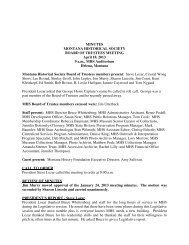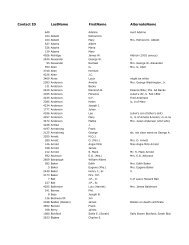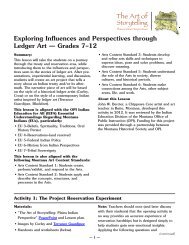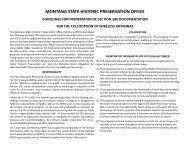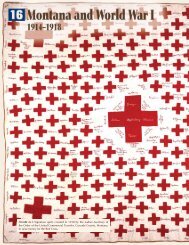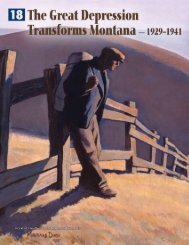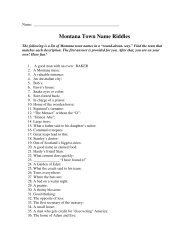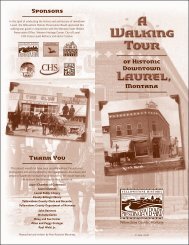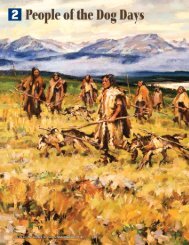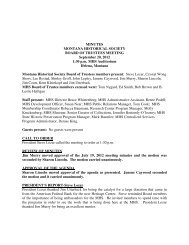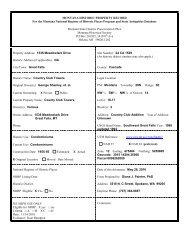Chapter 11 - Montana Historical Society
Chapter 11 - Montana Historical Society
Chapter 11 - Montana Historical Society
Create successful ePaper yourself
Turn your PDF publications into a flip-book with our unique Google optimized e-Paper software.
FIGURE <strong>11</strong>.<strong>11</strong>: Northern Cheyenne<br />
farmers Wesley Whiteman (left) and<br />
James Flying Bird (right) grew wheat,<br />
oats, alfalfa, and seven gardens full of<br />
vegetables. Whiteman said later, “I put<br />
the watermelon and cantaloupe on the<br />
side hill and when they got ripe they’d<br />
come off the vine and roll down to a<br />
place where I’d pick them up.”<br />
2 1 6 P A R T 2 : A C E N T U R Y O F T R A N S F O R M A T I O N<br />
sickened one-third of the<br />
entire American Indian<br />
population, and up to<br />
90 percent on some reservations.<br />
Trachoma (a<br />
contagious eye disease that<br />
causes blindness) affected<br />
one in every fi ve American<br />
Indians. Thousands of<br />
non-Indians suffered and<br />
died from these diseases,<br />
too, but they were most<br />
prevalent on Indian<br />
reservations.<br />
Making a Living on the Reservations<br />
Indian people learned Euro-American farming techniques as a way to<br />
make a living after the bison were gone. The Salish, Pend d’Oreille, and<br />
Kootenai people of western <strong>Montana</strong> had been growing vegetables<br />
and wheat since the 1850s. Their hard work, their hand-dug irrigation<br />
system, and the rich, loamy soils of the region helped the people of the<br />
Flathead Reservation make headway against the grinding poverty that<br />
reservation life usually brought.<br />
The Northern Cheyenne people had begun farming and timber cutting<br />
in the 1880s, even before they had a reservation. The Crow people, too,<br />
gained some successes in farming. Far back in Crow history—before the<br />
Crow people came to the Plains—they had been agriculturalists. Perhaps<br />
this helped them become successful farmers during this period.<br />
Some reservation farmers struggled to build farms and learn how to<br />
operate unfamiliar equipment. Often the government did not send adequate<br />
equipment and funding, as promised in the treaties. On the Flathead<br />
Reservation, there were not enough plows to work the 80 fi elds of wheat.<br />
Reservation agent John Mullan reported that one old Salish man “planted<br />
a considerable crop this year, literally scratching it in with his nails.”<br />
Water and the Winters Decision<br />
While Indians were building their farms, their non-Indian neighbors<br />
were also building farms and ranches. Non-Indians often grazed their<br />
cattle on reservation lands and diverted water from rivers and streams<br />
to irrigate their farms. On the Fort Belknap Reservation, an argument<br />
over water turned into a landmark (historically important) court decision<br />
establishing water rights for Indian tribes.<br />
In 1905 the Fort Belknap Reservation agent, William R. Logan, complained<br />
to the commissioner of Indian affairs that nearby farmers were



